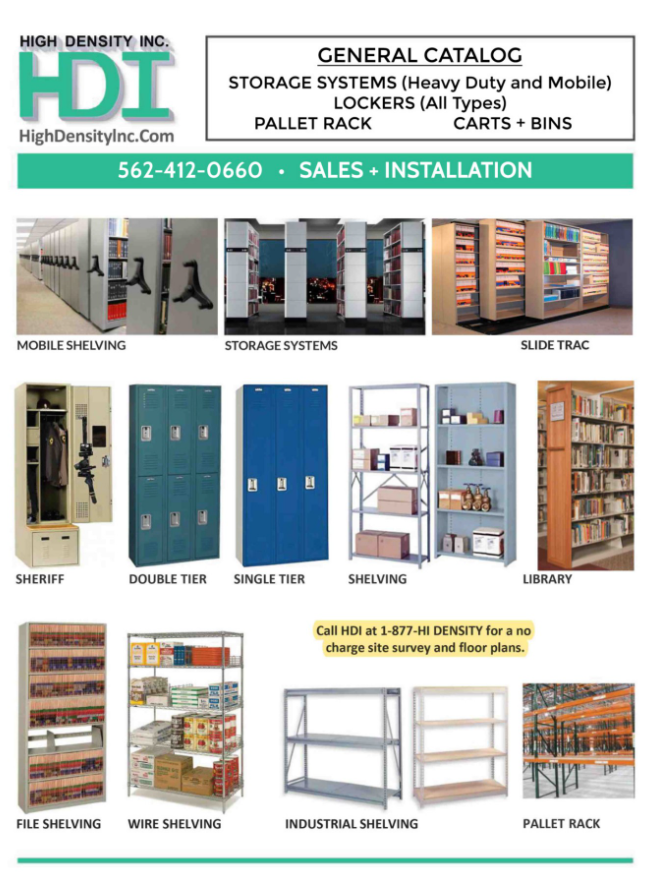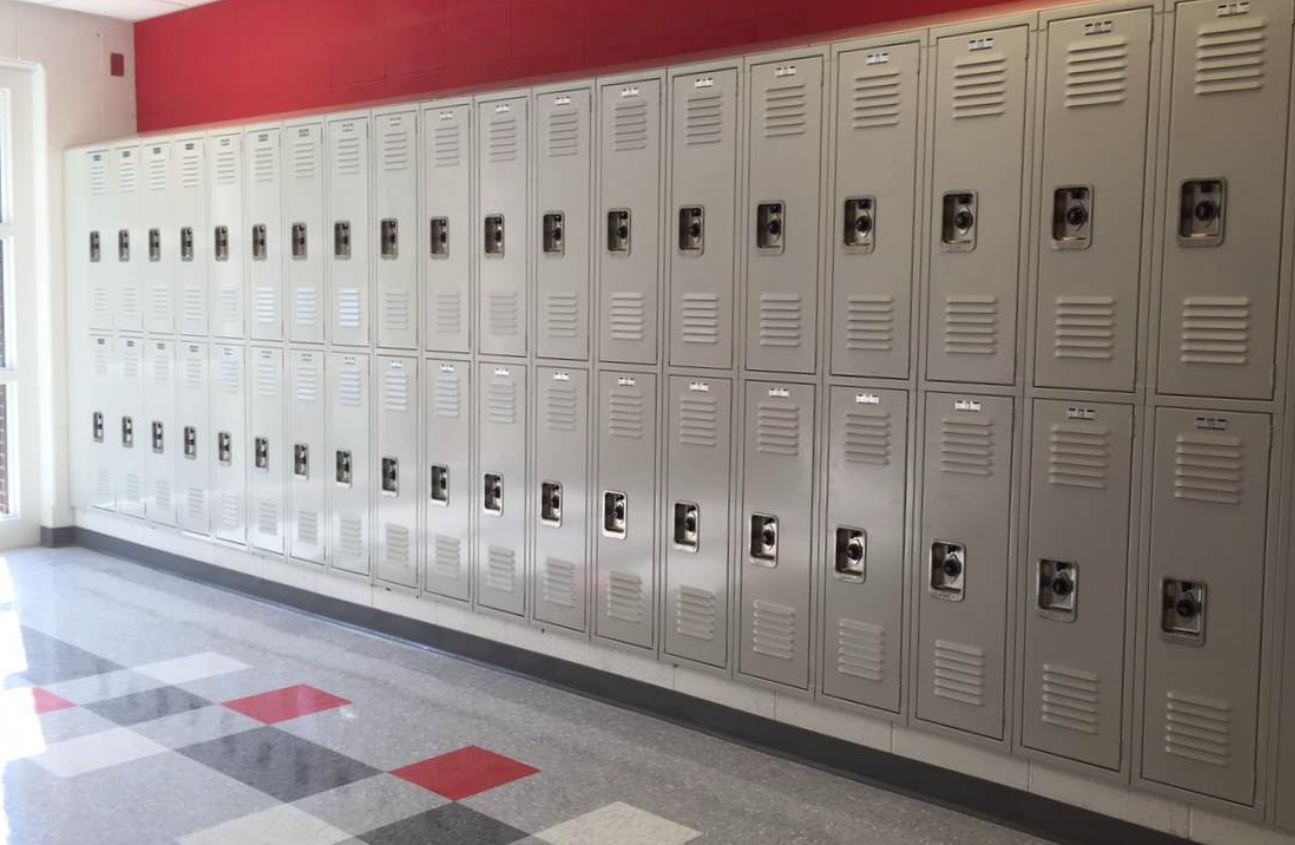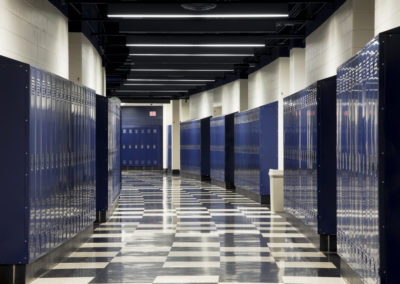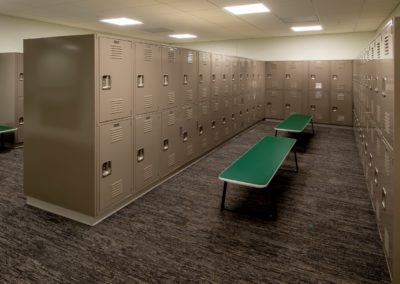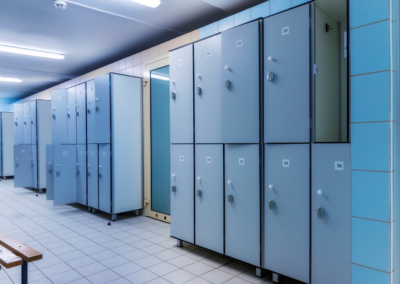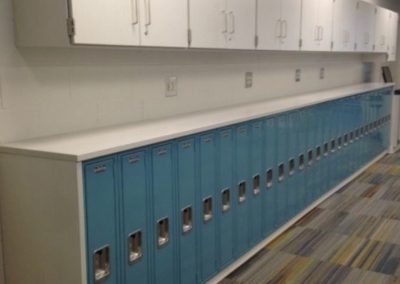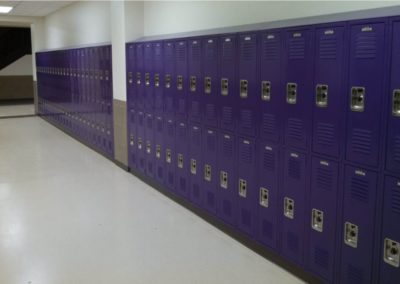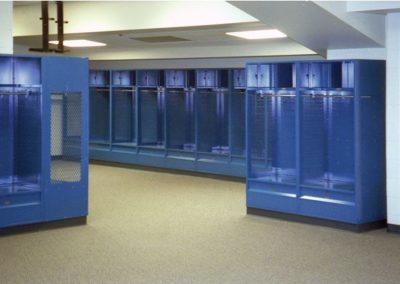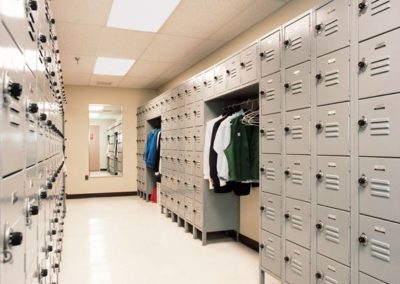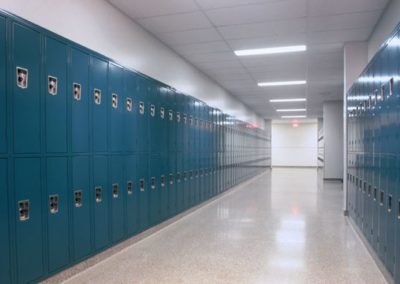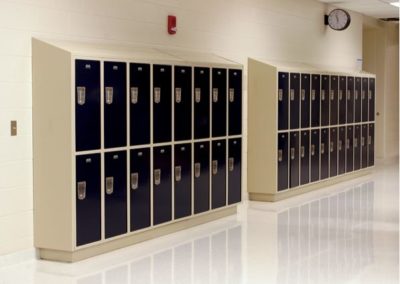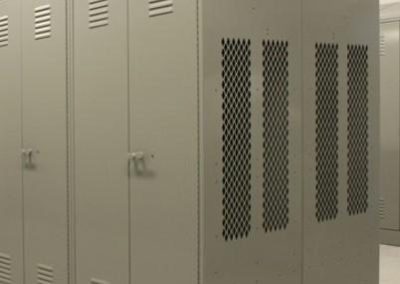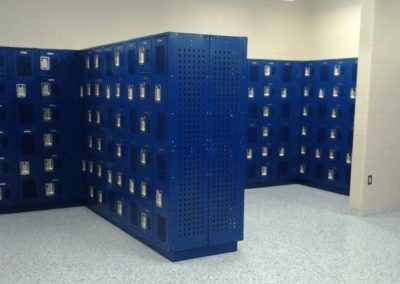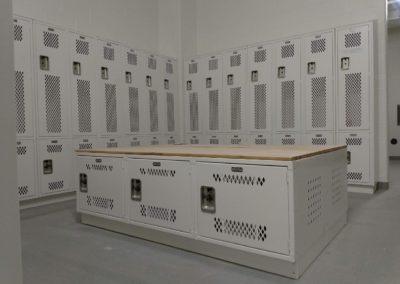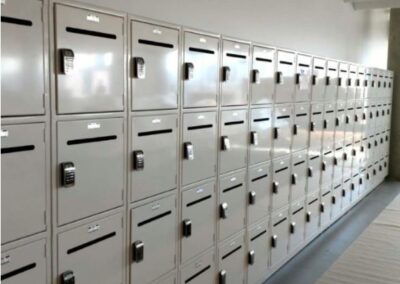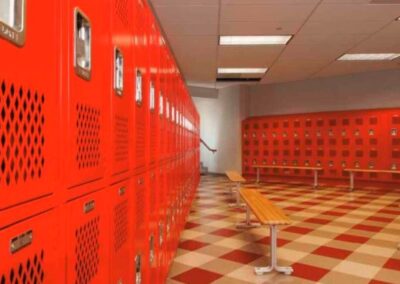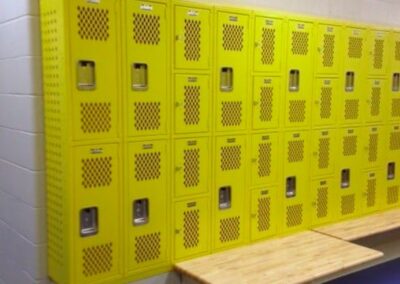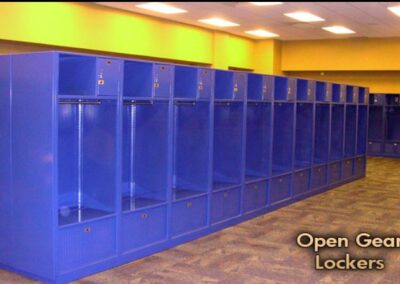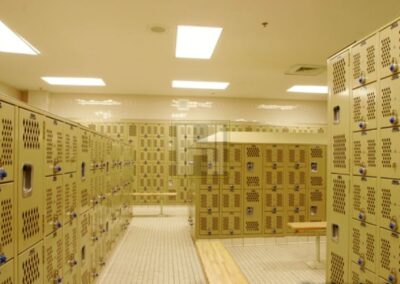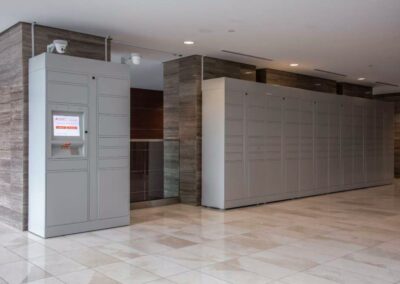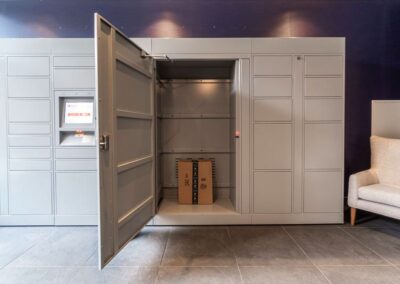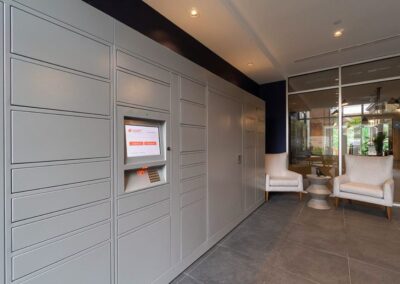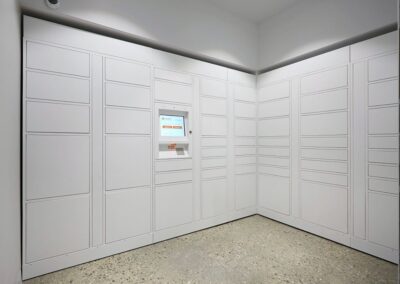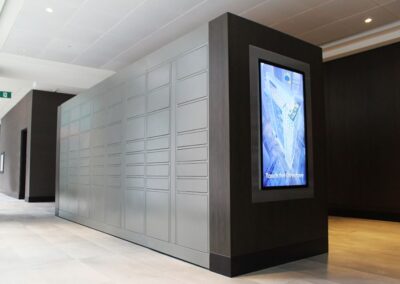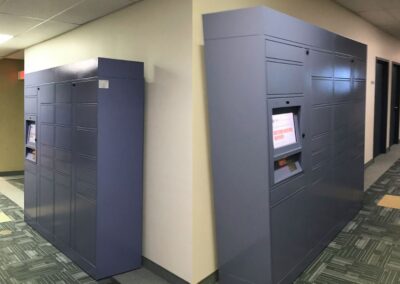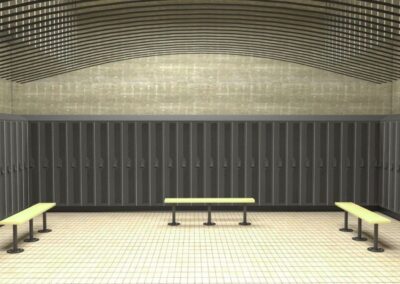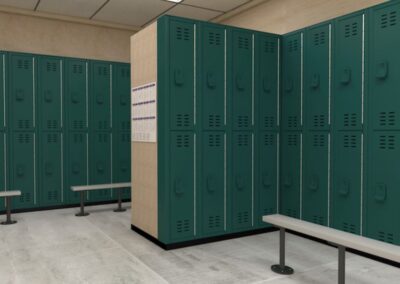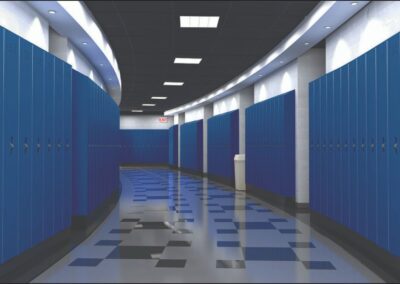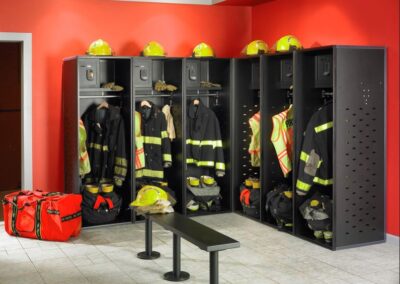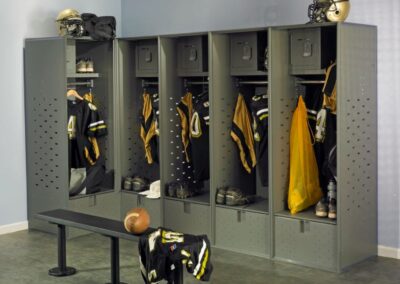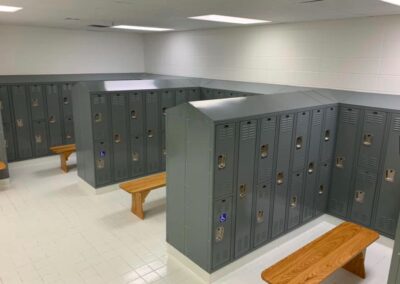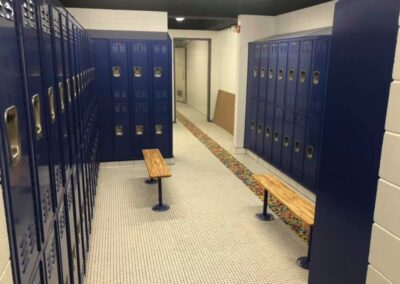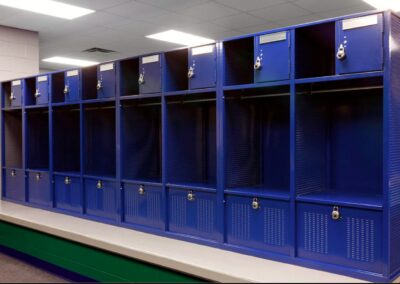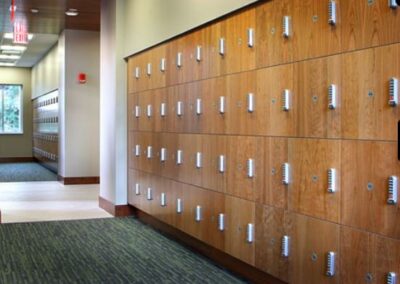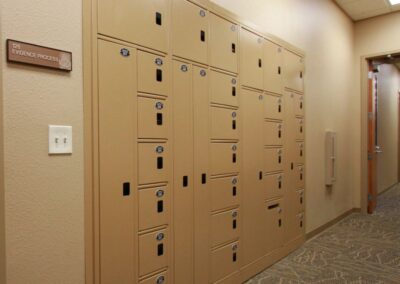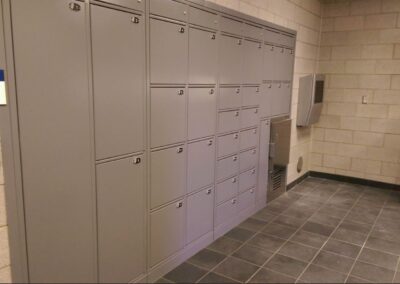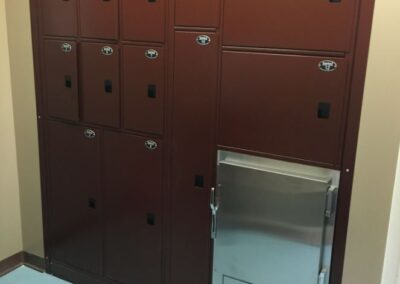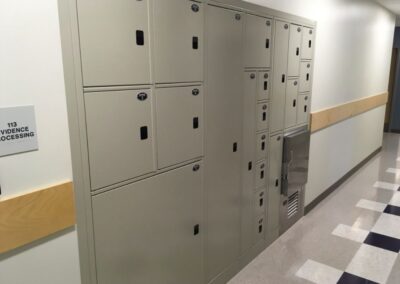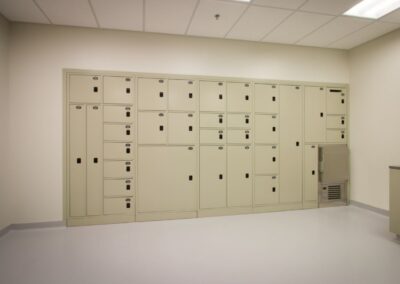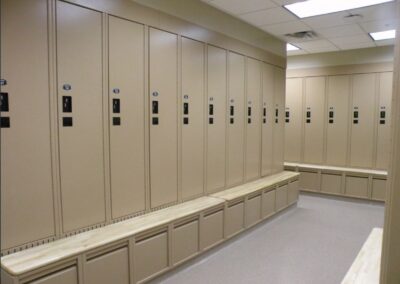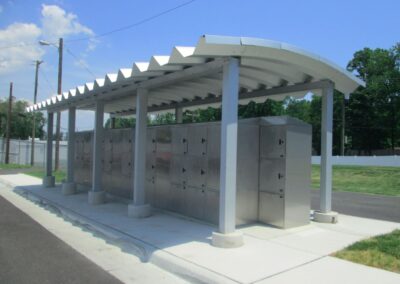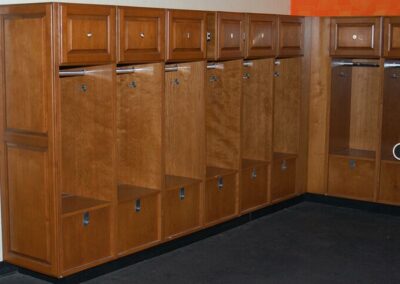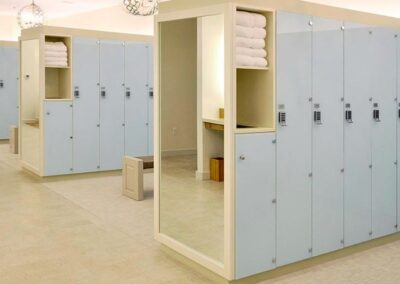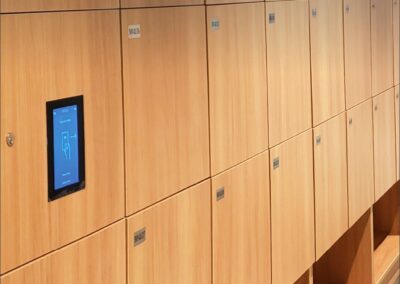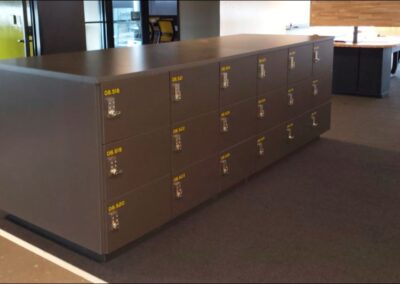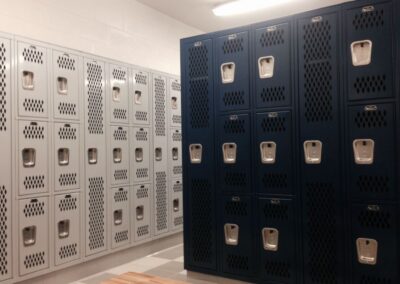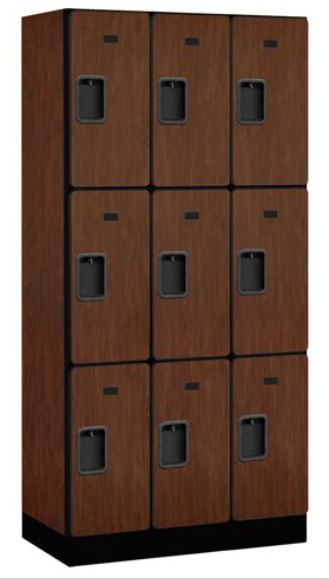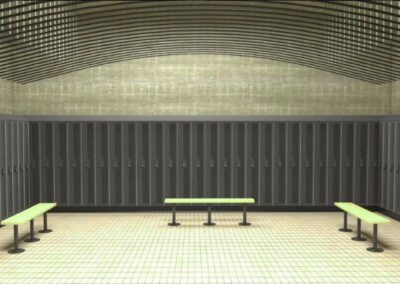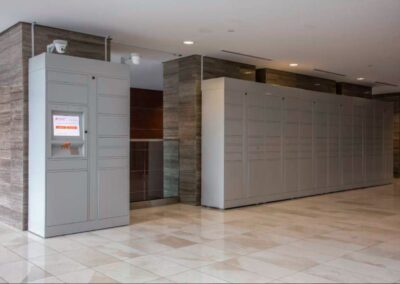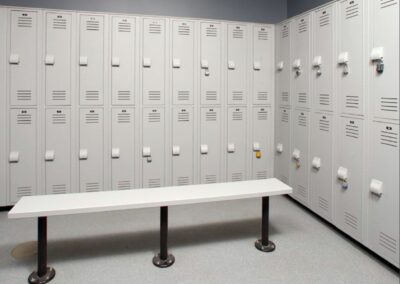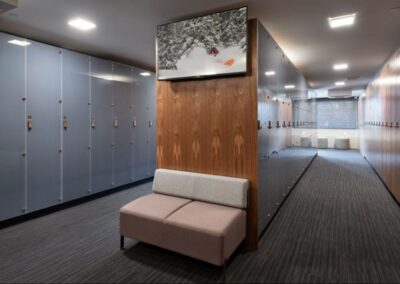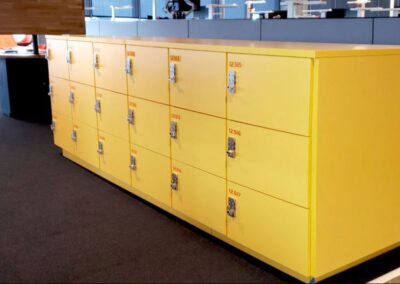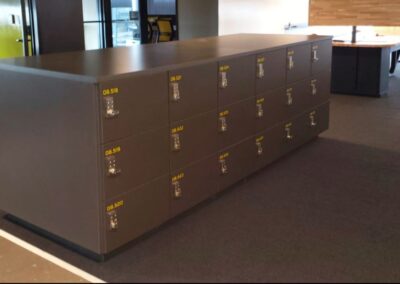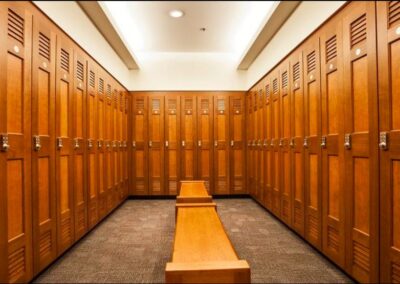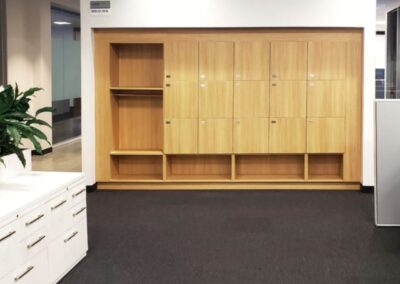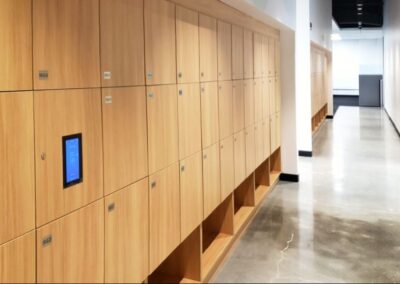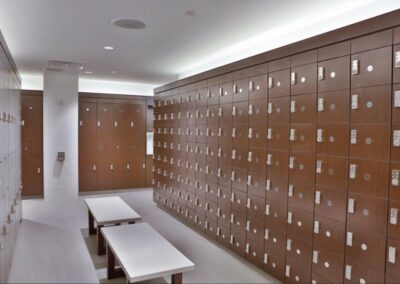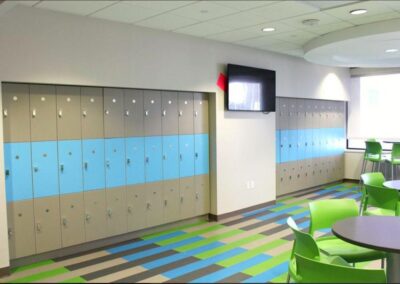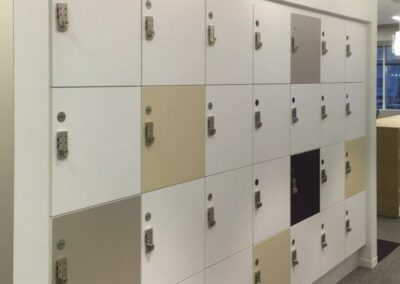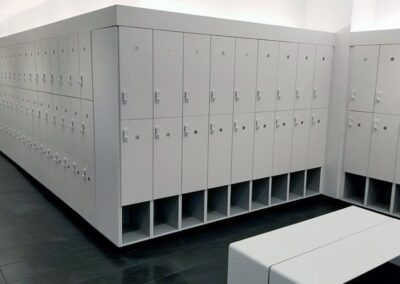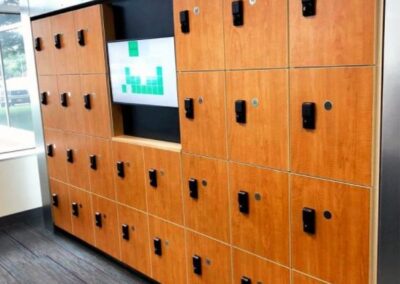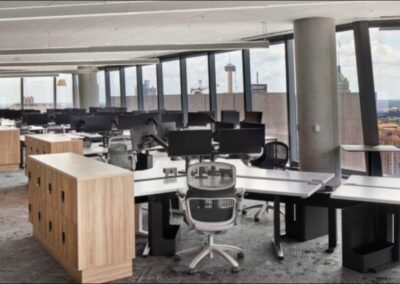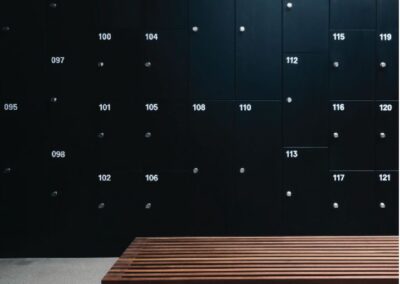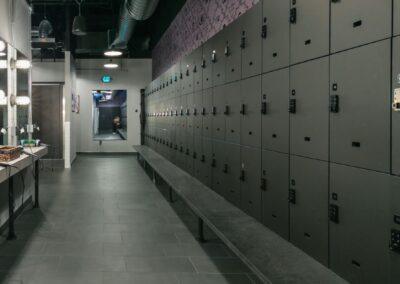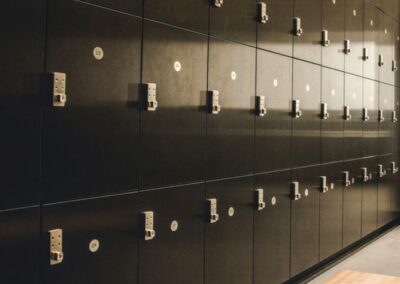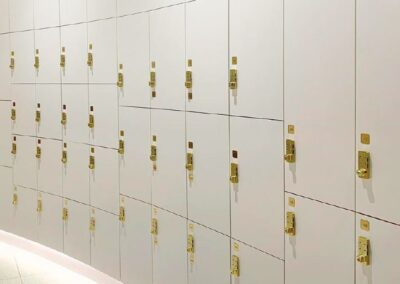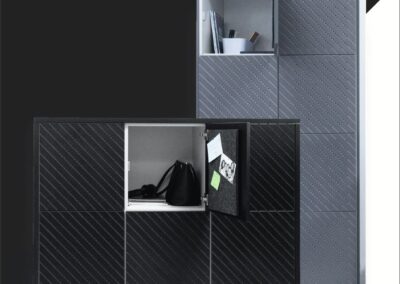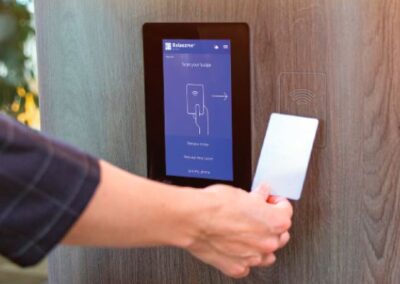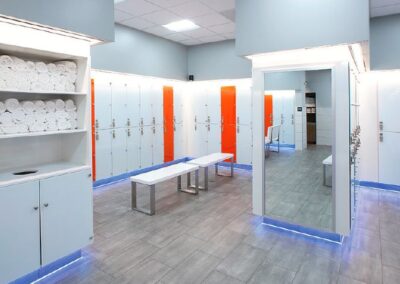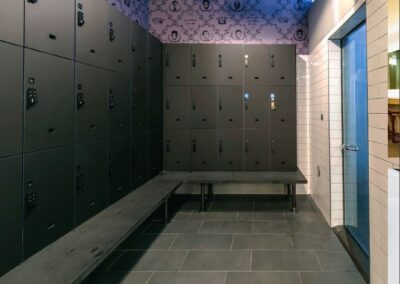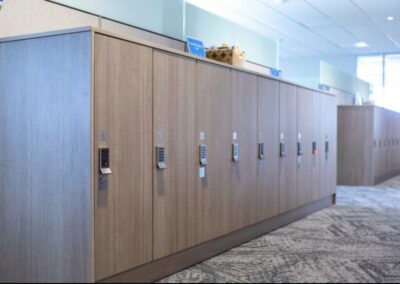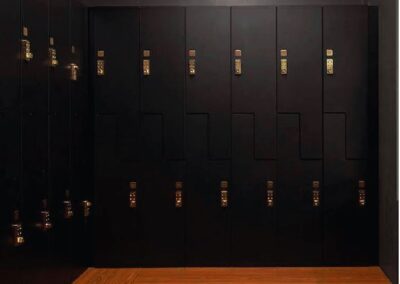LOCKERS-AN OVERVIEW
The variation of locker styles can seem endless! Choosing the “correct” locker can be made simple by having High Density, Inc. perform an on-site survey at your facility. The perfect locker for a gym isn’t the same one you’d pick for a nurse’s area or a sheriff’s station.
1.Know your application.The perfect locker for a gym isn’t the same one you’d pick for a school corridor or for an industrial situation. Start with the basics: how will the lockers be used and what performance, durability and security characteristics matter most.This means you can have anywhere between one and six lockers stacked vertically in one unit. A one-tier locker is tall and slender. A two-tier locker works if students or staff are hanging jackets or shorter items or are storing books and papers. The more tiers you have, the smaller the actual storage space inside the locker so it’s important to know what will be contained in the lockers. It’s also important to keep in mind the height of the locker user. If the lockers are in an elementary school, fewer tiers are better because the students are shorter; the upper tiers in a five-tier stack would be inaccessible to them.
2.Select the right product for your needs. By understanding how features and parts affect performance, durability, and security, you can make the best choice for your application.Locks, benches, bases, slope tops and other items add utility and enhance the overall appearance. Color and finish choices enable the lockers to mate perfectly with their environment and the users’ needs. You will need to consider the actual storage space needed within the locker itself. Locker sizes are defined by tiers, meaning different levels are stacked vertically on top of one another. Lockers can be purchased in sizes of from one to six tiers. This means you can have anywhere between one and six lockers stacked vertically in one unit.The more tiers you have, the smaller the actual storage space inside the locker so it’s important to know what will be contained in the lockers. It’s also important to keep in mind the height of the locker user.
- Have HDI specify adequate quality of construction to meet your anticipated needs. For example, the standard sheet-metal locker features 16-gauge doors and frames with 24-gauge body parts. This is more than adequate for many applications. If, however, you consider your facility subject to “heavy use and abuse,” you may want to upgrade your locker specs to heavy-duty construction, which features 14-gauge doors and 16-gauge body parts. More steel obviously means greater abuse resistance.
You can further enhance the durability of your locker room by specifying all-welded construction, which ensures maximum abuse resistance. Although the initial cost is higher, all-welded lockers offer longer service life and can be set in place and anchored in a fraction of the time required for on-site assembly.
- Locker performance begins with a strong frame and door and can be enhanced depending on the latching mechanism, choice of ventilation, and accessories.Choose the paint finish that fits your application. Here again, the standard enamel finish (either baked-on or powder coated) is adequate for many applications. On the other hand, if your locker room is high humidity, consider a corrosion-resistant finish or use of galvanized steel.
- Ventilation is important.Standard door louvers—regular or mini—are not designed to provide thorough ventilation. If your priorities include reducing odor through increased ventilation, optional diamond perforations will fill the bill while adding an appealing design element to the locker door fronts.
If maximum available ventilation is required, along with visual inspection to encourage neatness and/or discourage storage of unauthorized articles, consider lockers made of 13-gauge expanded metal, which provide approximately 74-percent unobstructed ventilation.
In the case of both diamond perforations and expanded metal, the ventilation pattern can be repeated on lockers sides and backs for additional ventilation.
- SPECIAL CONSIDERATIONS. Who is using the lockers and what is the intended uses? For instance, if your lockers must accommodate coat hangers, you will need a minimum of 18 inches in depth. If the lockers are not built in or recessed into a wall, you may want to consider closed bases. Sloped tops also enhance aesthetics, and prevent staff from putting things on top, so fire hazards and unsightly “collections” do not amass. You may also want handicap-accessible lockers in your installation. These lockers feature a low-profile design and easy-to-reach handles.
- The locker style you choose must meet your end users’ storage requirements within constraints of available space. Single-tier lockers provide the most storage capacity but at the highest cost per person and with the least efficient use of space. If your storage needs involve long coats or heavy winter wear, you will have to give serious consideration to single-tier lockers, which also have a storage shelf for personal effects.If you have determined that full-height storage isn’t required, you next should consider double-tier lockers, which will accommodate twice as many people as single-tier lockers in the same square footage. Double-tier lockers are tall enough (the standard height of a locker opening is 30 inches or 36 inches) to store car coat length outerwear and umbrellas. Hats can be hung from a side hook.
The standard height of a triple-tier locker opening is either 20 inches or 24 inches, with widths up to 15 inches and depths from 12 inches to 21 inches in 3-inch increments.Multiple-tier lockers are available four-, five- and six-tiers high. They work well if your storage needs are limited to purses, lunches and other personal effects. These lockers can accommodate many people in a relatively small area but are very limited in storage capacity.
- Locker Accessories
The last thing to consider when purchasing new lockers is locker accessories. Below is a list of accessories you may want to consider.
- Legs — Lockers can be purchased with or without legs. Without legs, they sit flush on the floor. With legs, there’s open space between the locker and the floor. Keep in mind that if you purchase lockers with legs, the handle height and locker opening will go up by approximately six inches. This is important if your lockers will be used by young people.

- Slope top panel — Lockers typically come with a flat top, which allows dust to accumulate and can be difficult for the maintenance crew to clean. The slope top panel facilitates much faster and easier cleaning.
- Front and side bases — If you purchase lockers with legs, you might want to consider front and side base accessories. These panels enclose the space between the legs of the lockers on the front and side (at the end of a row of lockers). This prevents interesting stuff from accumulating underneath the lockers during the school day.
- Handles come next — There are three main types of locker handles recessed handles, door pull handles, and lift handles. All three can be padlocked by the user and each one has its own unique benefit. Recessed handles are good for security in areas where vandalism is a problem. This handle leaves nothing for a vandal to kick off, thereby securing the contents of the locker. The door pull handle is a friction catch handle which is very standard and provides an easy way to attach a padlock. The lift handle provides the quickest access to contents of the three.
ABOUT US
HIGH DENSITY INC 2023 ALL RIGHTS RESERVED






